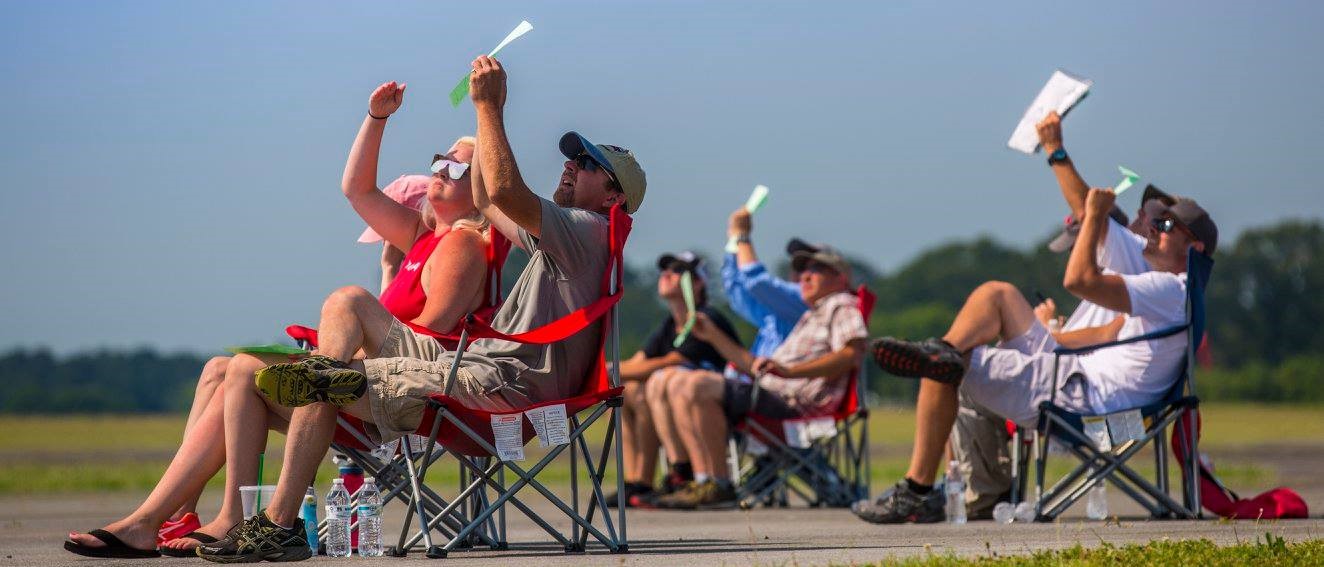
By Bill Hill, IAC 20509, Chapter 36
The Box
Similar sports competitions are diving and figure skating. The competition arena is a block of airspace approximately 3,300 feet long by 3,300 feet wide by 3,300 feet high. For safety, a minimum height above the ground is established with severe penalty points assigned if the pilot flies below the minimum height. The minimum height above the ground is 1,500 feet for the Primary and Sportsman categories; 1,200 feet for Intermediate; 800 feet for Advanced; and 328 feet for the Unlimited category. At the start of each category flight the first pilot will fly past the judges at the minimum height to give them a visual reference for that height. When the pilot flies into the box, he looks down at a marked playing field.
The aerobatic box markings are an L-shape in each of the 4 corners, a T-shape in the middle of each side, and an X-shape in the center of the playing field.
Category
Each competition category flies three flights. These flights are the Known Program, the Free Program, and the Unknown Program. The Known Program for each category is published by the International Aerobatic Club for each contest season. The Free Program is designed by the pilot to take maximum advantage of his particular skills and the performance capabilities of his airplane. The Unknown
Program is a sequence of maneuvers supplied by the International Aerobatic Club for each contest. The pilot is given the program no less than 12 hours in advance of the scheduled flight to study The competitors are not allowed to fly the program in advance of the competition flight. In the Primary category the pilots fly the same Known program for all three flights. In the Sportsman category most pilots fly the Known Program for all three flights. If a Sportsman pilot chooses to fly a Free Program, he also flies it as the Unknown Program.
From the Spectator’s point of view, once he sees the Known Program flown in a category, he knows all the other flights will be the same sequence of maneuvers in that category. The next Program flown, the Free Program, will be different and the Spectator will see each pilot flying a different sequence of maneuvers in Intermediate, Advanced, and Unlimited.
Scoring
Spectators can become more involved by scoring the competitors’ performances. Each maneuver is given a score from zero to 10 points. The scoring rules are:
- Loops are round.
- There must be a line between each maneuver and the line must be flown at a constant height above the ground with no climbing or diving.
- During up and down lines, the airplane’s attitude must be 45º or 90º. Wings must be parallel to the horizon. The airplane’s path will be affected by the wind and, therefore, is not judged.
- Level turns must remain at a constant height above the ground and at a constant bank angle.
- Rolls on vertical and 45º up and down lines must be in the center of the lines.
- Roll rate must remain the same throughout the roll.
- During hesitation rolls, the angular change between hesitations must be the same.
- All maneuvers must start and end either parallel to or perpendicular to the Judges Line.
- A maneuver starts from level flight attitude and ends in a level flight attitude.
- The maneuver can be a combination loops, lines, rolls, and a spin, and is graded in its entirety.
- Roll rate and airspeed are not graded.
Give the flight program a presentation score of zero to 10 based on balance, flow, and overall visual appeal. The pilot with the highest total score at the end of a flight program is the winner. The contest category winner is the pilot with the highest total score at the end of the three flights.
Enjoy our contest! I hope this article will help make the experience more meaningful!

